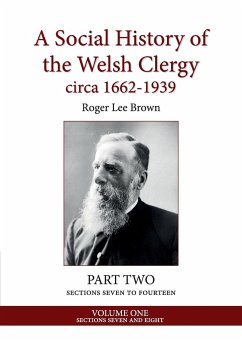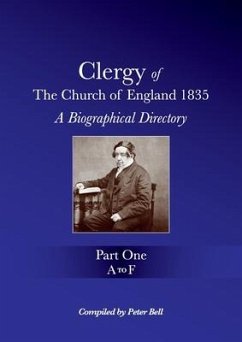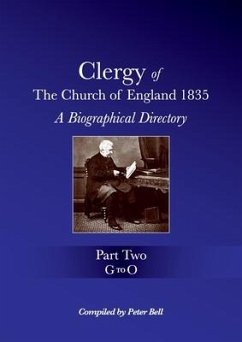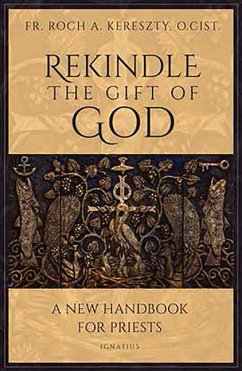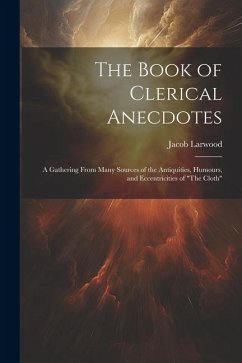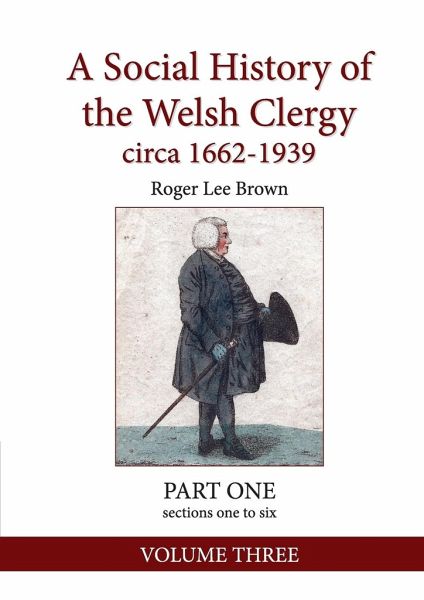
A Social History of the Welsh Clergy circa 1662-1939
PART ONE sections one to six. VOLUME THREE
Versandkostenfrei!
Versandfertig in 1-2 Wochen
22,99 €
inkl. MwSt.

PAYBACK Punkte
11 °P sammeln!
Part Three of A SOCIAL HISTORY OF THE WELSH CLERGY contains two sections, on the domestic position of the clergy and on the parsonage house. The study relates to the four Welsh dioceses of the Church of England then in the Province of Canterbury. The first section notes how clerical duty changed over the centuries, becoming more pastorally orientated, and using case studies notes how clergy "worked" their parishes. Reference is made to the numerous visitation charges and sermons which addressed this issue. Note is made of the idle, neglectful and unworthy clergy, and another chapter describes ...
Part Three of A SOCIAL HISTORY OF THE WELSH CLERGY contains two sections, on the domestic position of the clergy and on the parsonage house. The study relates to the four Welsh dioceses of the Church of England then in the Province of Canterbury. The first section notes how clerical duty changed over the centuries, becoming more pastorally orientated, and using case studies notes how clergy "worked" their parishes. Reference is made to the numerous visitation charges and sermons which addressed this issue. Note is made of the idle, neglectful and unworthy clergy, and another chapter describes their external lifestyle, noting the sporting, masonic, academic clergy in particular. Further chapters describe the clerical families, their wives, including those who controlled their husbands' parishes, their children and their servants. The final section relates to the parson's house, noting the lack of or deplorable state of much of the housing in the 18th century, the concerns expressed about this state of affairs, especially by bishops, as the lack of a house often led to pluralism and absenteeism, and the remedies put forward, especially the use of mortgages through Queen Anne's Bounty. This, often accompanied by a gradual increase in the wealth of parishes through the enclosure movement, enabled the so-called great rebuilding of the parsonage houses in the late eighteenth century and onwards. This was assisted by the work of the Ecclesiastical Commissioners who, with the Bounty, demanded a certain size and style of house which was often impractical and expensive to maintain in the poorer Welsh parishes. Again, case studies indicate how these parsonage houses were financed, and the considerable problems which occurred due to a lack of finance or difficulties with builders. A final chapter looks at the dilapidation procedures, by which a parsonage house was required to be put in good order by the retiring incumbent and his estate. This was a cause of considerable hardship in numerous cases, and attempts to alleviate the difficulties were not entirely successful. The three parts of the study, of which another three will be shortly made available, indicate all too clearly that the lot of the parson in Georgian and Victorian times was never the golden age that many assume it was.



